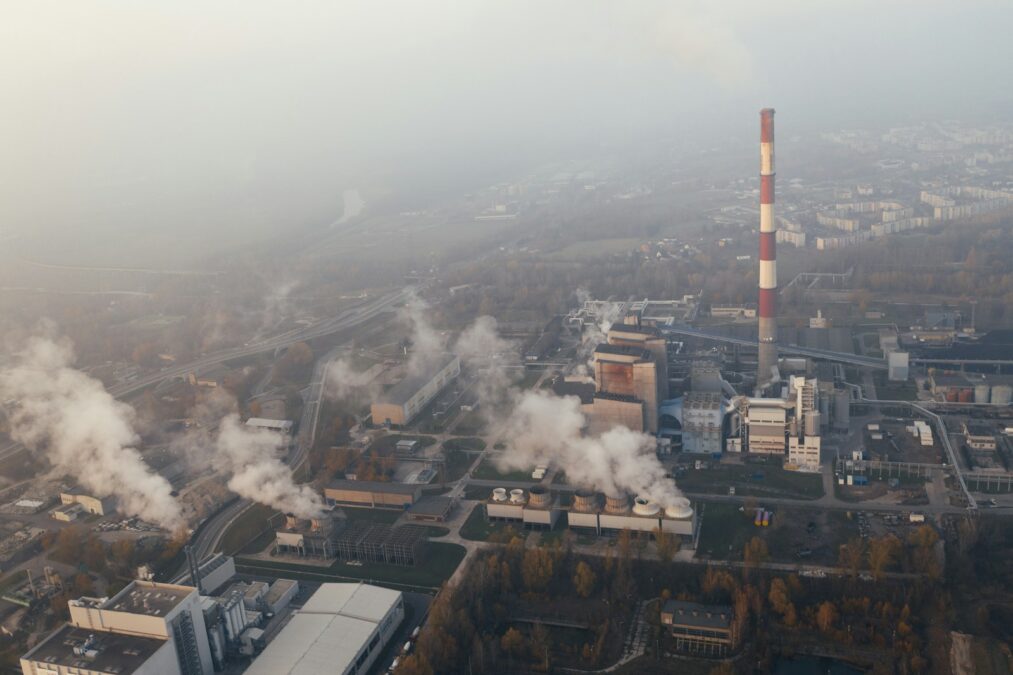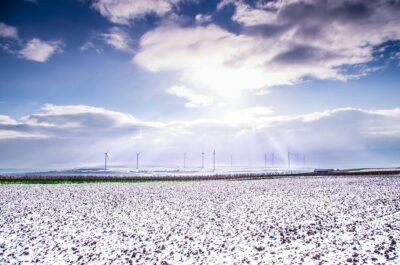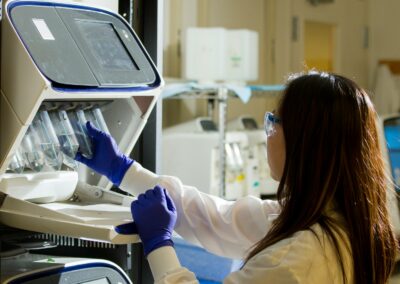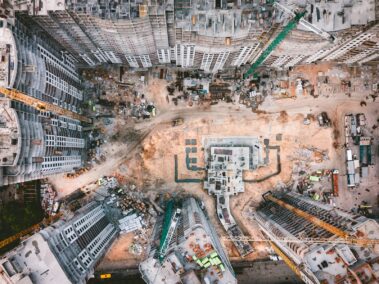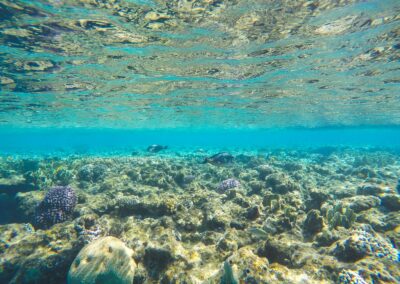Supporting Conservation Efforts through Advanced Monitoring
The Role of Environmental Monitoring in Biodiversity Conservation
Environmental monitoring systems for biodiversity play a crucial role in providing insights into the health and status of natural habitats. In regions like Saudi Arabia and the UAE, where rapid urbanization and industrialization pose significant threats to biodiversity, these systems are essential for supporting conservation efforts. By continuously monitoring various environmental parameters, these systems help detect changes in ecosystems, allowing for timely interventions to protect and preserve biodiversity.
In cities such as Riyadh and Dubai, the adoption of advanced environmental monitoring technologies is driven by the need to balance development with environmental sustainability. These cities are investing in state-of-the-art monitoring systems that utilize IoT sensors, satellite imagery, and AI to collect and analyze data on biodiversity and ecosystem health. This comprehensive data collection enables researchers and policymakers to identify trends, assess the impacts of human activities, and develop strategies to mitigate negative effects on natural habitats.
The collaborative efforts of government agencies, research institutions, and technology providers in the UAE exemplify the successful implementation of environmental monitoring systems. Initiatives like the UAE National Biodiversity Strategy and Action Plan aim to conserve biodiversity by leveraging advanced monitoring technologies. These efforts ensure that biodiversity conservation is integrated into national development plans, promoting a sustainable future for the region.
Leveraging Modern Technology for Effective Biodiversity Monitoring
The role of modern technology in enhancing biodiversity monitoring cannot be overstated. In Saudi Arabia and the UAE, the adoption of advanced technologies such as AI, IoT, and satellite remote sensing is driving significant improvements in environmental monitoring. These technologies enable real-time data collection and analysis, providing stakeholders with the insights they need to make informed decisions for biodiversity conservation.
In Riyadh, the implementation of IoT-enabled sensors across various ecosystems allows for continuous monitoring of environmental parameters such as temperature, humidity, and soil moisture. These sensors collect data on the presence and abundance of different species, helping to track changes in biodiversity. By analyzing this data with AI and machine learning algorithms, researchers can identify patterns and predict potential threats to biodiversity. This proactive approach ensures that conservation measures can be implemented promptly to protect vulnerable species and habitats.
Dubai’s Smart City initiative highlights the integration of satellite remote sensing into biodiversity monitoring. Satellite imagery provides a comprehensive view of large and remote areas, enabling the detection of changes in land cover, vegetation, and water bodies. By combining satellite data with ground-based observations, researchers can assess the health of ecosystems and detect signs of habitat degradation. This integration of technologies enhances the accuracy and efficiency of biodiversity monitoring, supporting effective conservation efforts.
Impact on Conservation Efforts and Ecosystem Health
Effective environmental monitoring systems are essential for supporting conservation efforts and maintaining ecosystem health. In Saudi Arabia and the UAE, the data collected from these systems provides a solid foundation for developing evidence-based conservation policies. These policies aim to protect biodiversity, restore degraded habitats, and ensure the sustainable use of natural resources, ultimately improving the quality of life for residents.
In Riyadh, environmental monitoring systems support compliance with national and international conservation standards. Data from these systems is analyzed to identify areas of high biodiversity value and prioritize conservation efforts. For example, monitoring the health of coral reefs, mangroves, and desert ecosystems can help identify threats and implement targeted interventions to preserve these critical habitats. By investing in advanced monitoring technologies, Riyadh can enhance its conservation efforts and contribute to global biodiversity goals.
Dubai’s conservation policies are similarly informed by comprehensive data from environmental monitoring systems. The city’s authorities use this data to implement measures aimed at protecting natural habitats and promoting sustainable development. For instance, monitoring urban green spaces, wetlands, and coastal areas can provide insights into the impacts of urbanization and climate change on biodiversity. By leveraging data-driven insights, Dubai can develop and implement effective conservation strategies that balance economic growth with environmental sustainability.
The Future of Environmental Monitoring Systems for Biodiversity
As technology continues to evolve, the future of environmental monitoring systems for biodiversity looks incredibly promising. Advances in AI, IoT, and satellite remote sensing will enable even more accurate and efficient monitoring of ecosystems. In cities like Riyadh and Dubai, ongoing investments in research and development will ensure that environmental monitoring systems remain at the cutting edge of innovation. The integration of emerging technologies such as the Metaverse and advanced data analytics could further enhance the capabilities of these systems, providing new opportunities for collaboration and efficiency.
One promising development is the use of generative artificial intelligence to create predictive models for biodiversity and ecosystem health. These models can simulate various environmental scenarios and predict their potential impact on biodiversity. Additionally, the use of blockchain technology can enhance the security and transparency of environmental data, ensuring that all stakeholders have access to accurate and reliable information. The integration of these technologies into environmental monitoring systems will provide a robust foundation for proactive and coordinated conservation efforts.
However, the widespread adoption of advanced environmental monitoring systems also presents certain challenges. Ensuring the reliability and accuracy of real-time data is paramount, as is the need for continuous investment in technological infrastructure. Collaboration between government agencies, private sector partners, and research institutions is essential to address these challenges and drive the development of innovative solutions. By embracing these opportunities and overcoming the associated challenges, Saudi Arabia and the UAE can continue to lead the way in enhancing biodiversity conservation and environmental sustainability.
Conclusion: The Strategic Importance of Environmental Monitoring
The integration of advanced environmental monitoring systems through collaboration between technology companies, research institutions, and government agencies is essential for enhancing biodiversity conservation and ecosystem health. In Saudi Arabia and the UAE, these partnerships are driving significant improvements in the way ecosystems are monitored and managed. By leveraging cutting-edge technologies such as AI, IoT, and satellite remote sensing, these regions can ensure that their conservation efforts are efficient, effective, and timely.
The use of real-time data and advanced analytics provides stakeholders with the insights they need to make informed decisions quickly and accurately. This proactive approach to environmental monitoring significantly reduces the potential for biodiversity loss and habitat degradation. The collaboration between various stakeholders ensures that the latest advancements in technology are continuously integrated into conservation strategies, keeping these regions at the forefront of innovation and sustainability.
Looking ahead, the future of environmental monitoring systems for biodiversity is filled with potential. Advances in AI, IoT, and satellite remote sensing will continue to enhance the capabilities of these systems, providing new opportunities for innovation and collaboration. By embracing these technologies and addressing the associated challenges, Saudi Arabia and the UAE can continue to lead the way in enhancing biodiversity conservation and environmental sustainability, setting a global standard for excellence in ecosystem management.
—
#BiodiversityMonitoring #EnvironmentalMonitoring #EcosystemHealth #NaturalHabitats #ConservationEfforts #SaudiArabia #UAE #Riyadh #Dubai #ModernTechnology

